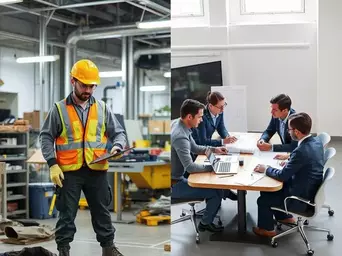Step 1
Accessibility Audits & Needs Assessment
- Identify barriers
- Assess room mobility
- Evaluate safety setups
Crucial for understanding specific home needs.
Get exclusive insights, tips, and updates on home renovations and facility maintenance from Myles Properties.
Posted on: 2025-10-15
By: Samuel T. Masters
Have you ever considered how transformative simple modifications can be for a home's accessibility? These upgrades are not just about meeting legal standards; they're about fostering an inclusive environment for everyone!
Implementing ADA accessibility upgrades in your home involves a structured approach to ensure functionality, compliance, and comfort. The process typically moves through assessment, planning, and execution stages.
Crucial for understanding specific home needs.
Roadmap tailored to unique needs.
Choosing the right path for implementation.
Ensuring long-term functionality and safety.
At Myles Properties and General Contractors LLC, we recognize that creating a home that's accessible for everyone is not just a legal obligation but a moral one. ADA accessibility upgrades can significantly enhance the quality of life for those with disabilities or mobility challenges. It’s about crafting spaces that welcome and empower, allowing all individuals to navigate their homes with ease and dignity!
In Memphis, where we serve our community, making homes accessible means not only meeting compliance standards but also ensuring that our clients feel safe and comfortable. Understanding ADA accessibility is a crucial first step for homeowners, as it offers insights into how they can transform their living spaces to be more inclusive.
ADA accessibility isn't just about compliance; it’s about enhancing the usability of a home. Making modifications can greatly improve mobility for individuals with disabilities and can also prevent accidents, particularly as we age. For instance, the Administration for Community Living provides a useful Home Modification Action Guide that details various improvements. Accessibility upgrades make a house feel like a home for everyone, regardless of their physical abilities.
When homes are designed with accessibility in mind, it creates a welcoming atmosphere for friends and family as well. This is particularly important for community gatherings, where everyone should feel included and safe.
The Americans with Disabilities Act (ADA) is a landmark piece of legislation that ensures equal rights for individuals with disabilities in various aspects of life, including housing. Homeowners need to understand how this law impacts their properties, especially if they're planning renovations. The Department of Housing and Urban Development offers resources on retrofits and adaptations to improve mobility in the home, aligning with ADA principles. It’s about meeting specific standards that promote accessibility and safety throughout the home.
As a veteran-operated firm, we strongly believe in the spirit of the ADA—making sure everyone can have access to their homes and live independently. I’ve seen firsthand how these upgrades can change lives! As you consider enhancing your home’s accessibility, think of it not just as a requirement but as an opportunity to invest in a more inclusive future.
Making your home ADA-compliant involves several critical areas that can greatly improve accessibility. It’s about thoughtful design and implementation that caters to the needs of those who may face challenges in mobility.
These key areas will be explored further, providing you with the information you need to create functional and inviting spaces for all residents and visitors. Let’s dive deeper into each of these aspects to see how we can enhance your home’s accessibility together!
As you consider making your home more accessible, what aspect of ADA upgrades do you find most challenging or intriguing? Share your thoughts below:
As we dive into the next steps for implementing ADA upgrades in your home, it's essential to create a roadmap tailored to your unique needs. This process ensures that your space is not only compliant but also functional and comfortable. Let’s take a look at some actionable steps to guide you through the upgrade journey!
To start, I recommend crafting a personalized ADA upgrade checklist. This checklist will help you prioritize what needs to be done and keep track of your progress. Here are key items to consider:
This checklist not only helps in organizing your thoughts but also provides direction as you move forward with your upgrades. Remember, every home is different, so tailor this list to fit your specific needs and circumstances!
When it comes to implementing ADA upgrades, you have the option to tackle some projects yourself or hire professionals. As a veteran-owned business with over 25 years of experience, I’ve seen how both approaches can work effectively in different situations. Consider the following factors:
If you're unsure, I’d recommend starting small with DIY projects to gain confidence, while reserving complex tasks for experienced professionals like Myles Properties. We’re here to help you every step of the way!
Conducting an accessibility audit is a crucial step to understanding your home's specific needs. This audit helps identify potential barriers and highlights areas for improvement. The California Department of Aging offers guidance on making home modifications, which can be a valuable resource for audit considerations. Here are key steps to conduct an effective audit:
By identifying these needs early, you can create a more comprehensive plan for your upgrades. At Myles Properties, we can assist with audits and recommend specific changes to enhance your home’s accessibility.
Accessibility isn't just about meeting legal standards; it's about fostering safety and independence for everyone in your home. Enhancing accessibility benefits not only individuals with disabilities but also elderly family members and guests. This makes your home a welcoming space for all.
When we talk about accessibility, it’s important to recognize its broader impact. A community that prioritizes accessibility demonstrates a commitment to inclusivity and support for all individuals. Think about how an accessible space can:
Accessibility is a vital aspect of community health and vitality, and it starts in our homes!
As you consider your next steps in enhancing home accessibility, remember that this journey is ongoing. Regular assessments and updates ensure your home remains functional and safe as needs change over time.
As life evolves, so do our needs. Ongoing assessments can help you stay ahead of necessary upgrades, ensuring your home continues to support you and your loved ones. This proactive approach not only enhances safety but also adds value to your property.
Finally, I encourage you to explore community resources that can provide support and guidance on ADA compliance. Local nonprofits, government programs, and disability advocacy groups can offer assistance and sometimes financial aid for your upgrades. Embracing these resources can make a significant difference in your journey towards a more accessible home!
Here is a quick recap of the important points discussed in the article:



 Have you ever considered how upgrading your home can not only save you money but also contribute to
Have you ever considered how upgrading your home can not only save you money but also contribute to
 Imagine you’re responsible for the upkeep of a bustling facility, and one day you discover a signi
Imagine you’re responsible for the upkeep of a bustling facility, and one day you discover a signi
 Deciding between outsourcing and in-house facility maintenance can feel like navigating a maze. The
Deciding between outsourcing and in-house facility maintenance can feel like navigating a maze. The